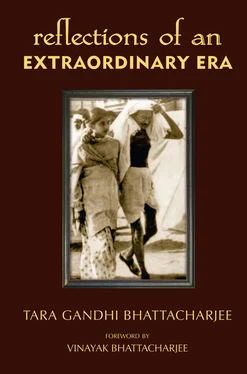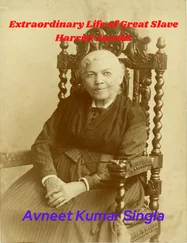Jyoti Prasad (or ‘Baba’ as I called him) was born in 1922 when the British empire, financially burdened by years of imperialist expansion and the debilitating effects of World War I, began to steadily unwind. He was born in the village of Bhatpara, District 24 Parganas North, outside Calcutta in today’s West Bengal. The address, still current today, is yet another remnant of the infrastructure left to India by the British, in this case of an organized postal system and its associated administrative order.
As a son of the leading Brahmin family of the village, Baba was born into respectability and responsibility, and went on to achieve recognition and success as an economist, initially in rural Bengal at Tagore’s Viswabharati University in Shantiniketan, then later in the Indian government in New Delhi, and finally at the United Nations in Rome, Italy. Twelve years younger than him, my mother met my father at Shantiniketan in the mid-1950s, and later, they married – the result of love and not arrangement. This was unique for the time, and even more so, given their different Hindu castes. My mother’s statesmanlike family was no reason for my father’s family to compromise on fundamental Hindu principles; they maintained that no Bhattacharjee family member would attend the wedding in Delhi. My father’s father, Dadu, did bless the union as he was very fond of his youngest son and equally of young Tara, but not without substantial debate via written correspondence between him and Rajaji, himself a Brahmin who had blessed the wedding of his own daughter, Lakshmi, with a lower caste banya – Devadas – the son of Mahatma Gandhi. Thus, Tara’s wedding took place in March 1957 and was held at 1 York Place (currently, 10 Janpath), which subsequently became the residence of Lal Bahadur Shastri, who in 1964 succeeded Nehru to become India’s second prime minister. Dadu did eventually yield and allowed a few distant relatives to attend what was to become the society wedding of the year.
Bengal’s role in India today is somewhat diluted, but back in the ’30s and ’40s, it was the very backbone of cultural India. It was the seat of reformist and progressive movements. Writers such as Tagore, painters such as Jamini Roy, and the rich tradition of theatre and folk music in Bengal helped to strengthen the confidence in Indians to stand on their own and demand independence from Britain. For most Indians of the time, Bengalis were the period’s equivalent of the Renaissance Tuscans, and thus despite the wedding ‘snub’, Ma’s family felt honoured to have a distinguished Bengali son-in-law.
Bhatpara is the mainspring of the Bengali Bhattacharjee clan, and an epic saga could be recounted about this village and the clan. How it has evolved in the shadows of economic and migratory cycles, our ancestral home there, the family itself and in particular Jyoti’s father, his elder brother Sambhu and Sambhu’s wife who is alive today – all put together make for a potential Satyajit Ray movie. Bhatpara is also the home of progressive India where an inter-caste wedding was allowed at a time when no one other than a Brahmin was allowed into the kitchen for fear of staining the purity of the house. This marriage was indubitably about love even if it must have been sparked by Tara’s rebellious streak.
As is so often portrayed in Indian culture and mythology, great achievement comes through great sacrifice. And so goes the legend of Sambhu who sacrificed his lifestyle to help secure his younger brother’s future. When Baba was offered a scholarship to study for a PhD at the University of Illinois, Dadu forbade him from going as leaving the shores of India was considered blasphemous at that time. Until this point, Sambhu had led a socially active life as the extrovert son of a well-to-do Brahmin businessman. As the cardinal unit of the village, the family needed worthy sons who could run the business, act with leadership in the community and play the many ritualistic roles expected of a clan head, including that of leading communal pujas at the family temple situated within the main house complex. Sambhu’s love for his younger brother steered him to take responsibility for all this so that Baba could be free to pursue academics and a career outside Bhatpara.
Dadu passed away in 1959. By then, he had seen the return of my father, his prodigal son, after six uninterrupted years in the United States, and had embraced Tara as a daughter-in-law and blessed the birth of Tara and Jyoti’s daughter, my older sister Sukanya.
Sambhu’s wife, Santvana, eighty-five years old and alive today, is a living representation of traditional Bengal. She is my Bodo Ma (or elder Ma) and is a paragon of Bengali simplicity and sophistication, attired almost always in simple white saris. She is herself a Bhattacharjee from Bhatpara and is one of nine siblings. To the best of my knowledge, she has not been outside Bengal very often, and has left Bhatpara only a few times in her life to go to Calcutta, or on pilgrimages to sacred sites in India. Today she is a diminutive figure, bent over after decades of sitting on the ground cooking for the family on a coal stove. Her mind is sharp and her voice brilliant as ever. She grasps things fast and is never surprised by world events, technological revolutions or global cultural idiosyncrasies, a trait that can at best be explained by the self-confidence that comes from being truly grounded in her own immediate society, a society which views itself as at the pinnacle of knowledge and teaching. She is above it all and has seen all manners of human interaction and socio-economic change from the window of her Bhatpara kitchen. She is the bearer of tradition and could have been Ma’s greatest detractor, but instead she always showered Ma with love and praise, as she does to this day. This is significant because she, more than any male in the house, has upheld the household rituals around purity; under a lesser woman’s watch, Ma would not have been allowed into the first floor of the house, let alone its kitchen.
The Bhatpara home stands unchanged by time, its yellow Italianate façade the same as I recall from the days I spent there as a child with Ma, Baba and Sukanya. In the hot monsoon months of July and August, we would spend a few weeks in Bhatpara eating Bengali food cooked on charcoal stoves and passing lazy afternoons resting by the tall windows overlooking the family temple. Dinner would not start before 10 p.m. and the evenings would merge into late nights addas with my cousins, aunts, uncles and parents. Things change slowly in Bhatpara; it was only in the mid-1980s that a dining table was introduced into the house, and a fridge arrived a few years after that.
Baba returned from America in the mid-1950s and established a centre for agricultural research at the university of Shantiniketan in West Bengal. From there he went on to distinguish himself as one of the great planners of the Indian socialist system and, together with other notable agricultural economists, as one of the minds behind the Green Revolution. His success in this field led him to a career with the United Nations, which in the mid-1960s took him to the headquarters of the Food and Agricultural Organization at Rome in Italy. This was the era of the Italian ‘miracolo’ and of the late ‘dolce vita’. This is where my sister and I spent our childhood, and during our twenty-year sojourn in that eternal city, Ma was primarily a mother, a wife and a homemaker. It certainly feels today that it was an idyllic childhood, and, unlike many others in the diplomatic communities, we integrated with the local Italian community effortlessly. We learnt the language, cooked the food, toured the country, and cultivated many local friends.
Baba died suddenly in 1986, and Ma, Sukanya and I relocated to Delhi during that summer. While our links with Italy still remain strong today, Ma has gone a step ahead and metamorphozed her relationship with the country from a domestic one to a working one. Given her affinity with the country and her fluency in the language, her life experiences and philosophies have attracted great interest in Italy where she is a frequent panellist and guest of honour at many conferences on peace, science and environment. The combination of Ma’s spiritualism with the flair and creativity of Italian enterprise has produced many beautiful and unique outcomes. You will find an example of this in the photo section of the book where the Italian telecommunication company, Telecom Italia, has used Gandhi’s imagery to heighten the significance of modern means of communication.
Читать дальше












